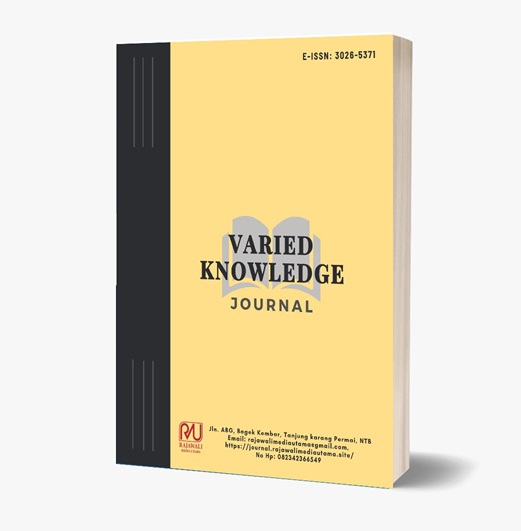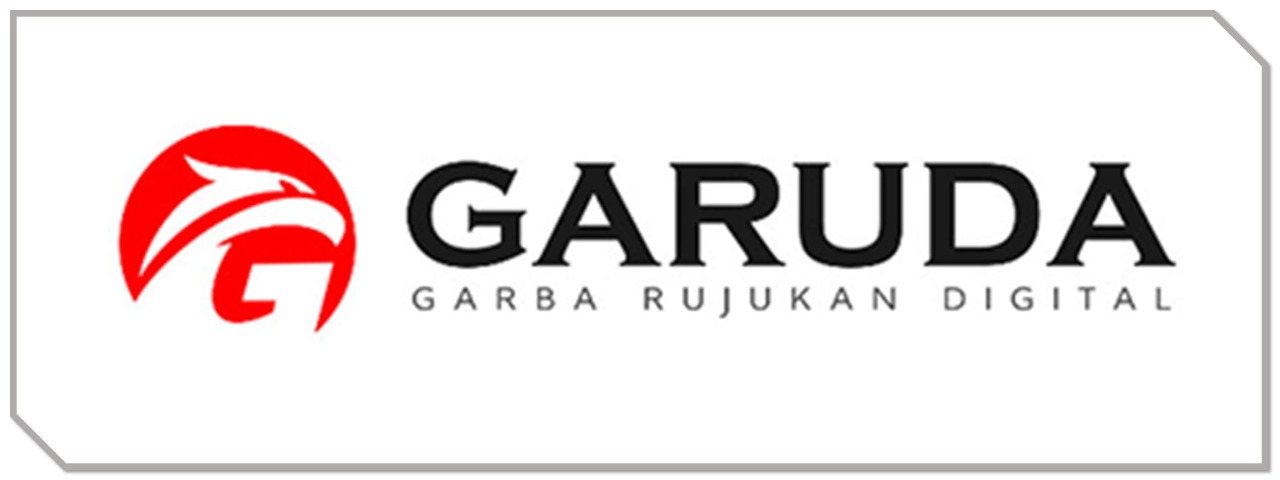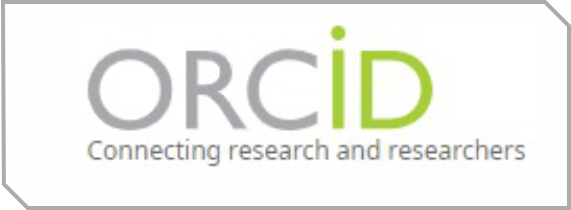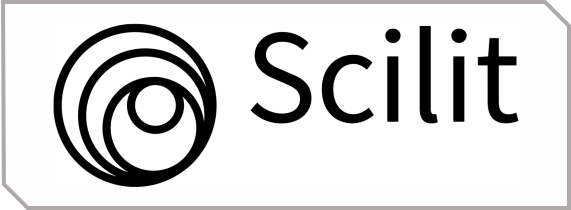Pemetaan Kemampuan Siswa pada Hasil Belajar Ujian Akhir Semester
Studi Mata Pelajaran Kimia
Keywords:
Summative Test, Quantitative Approach, Chemistry LearningAbstract
This study aims to describe the ability of high school students in mapping summative tests in chemistry learning and identifying chemistry summative test questions. The research method used is a descriptive method with a quantitative approach. The sampling technique used was random sampling technique. The research subjects were 105 high school students. Based on the results of research and discussion, the ability of high school students shows an average in the very high category with a percentage of 19% with a frequency of 20 students. The ability of students in the high category has a percentage of 25% with a frequency of 27 students. The ability of students in the medium category has a percentage of 55% with a frequency of 58 students. The average in the low category has a percentage of 0% with a frequency of 0 students. Furthermore, the ability of students in the very low category has a percentage of 0% with a frequency of 0 students. Overall, the ability of summative test students in high schools in Tegal City is in the moderate category for learning outcomes. The implication of the research results shows that the ability of students is still in the moderate category and measures the ability of students in one semester learning.
References
Alafnan, M. A., & Dishari, S. (2024). ESD goals and soft skills competencies through constructivist approaches to teaching: An integrative review. Journal of Education and Learning, 18(3), 708–718. https://doi.org/10.11591/edulearn.v18i3.21408
Alberti, S., Vannini, V., Ghirotto, L., Bonetti, L., Rovesti, S., & Ferri, P. (2024). Learning to teach with patients and caregivers: A focused ethnography. BMC Medical Education, 24(1). https://doi.org/10.1186/s12909-024-05197-5
Apipatunnisa, I., Hamdu, G., & Giyartini, R. (2022). Eksplorasi kemampuan literasi dan numerasi siswa sekolah dasar dengan pemodelan Rasch. Journal of Elementary Education, 05(18), 3.
Aris, N. M., Ibrahim, N. H., & Halim, N. D. A. (2025). Design and development research (DDR) approach in designing design thinking chemistry module to empower students’ innovation competencies. Journal of Advanced Research in Applied Sciences and Engineering Technology, 44(1), 55–68. https://doi.org/10.37934/araset.44.1.5568
Badruddin, A. (2024). Impact of demographic profile on sustainability learning: A management education students’ survey. International Journal of Management Education, 22(2). https://doi.org/10.1016/j.ijme.2024.100984
Berisha, F., & Vula, E. (2024). Introduction of integrated STEM education to pre-service teachers through collaborative action research practices. International Journal of Science and Mathematics Education, 22(5), 1127–1150. https://doi.org/10.1007/s10763-023-10417-3
Cambra-Badii, I., Gomar-Sancho, C., Mastandrea, P. B., Arrebola-Trias, X., Baños, J.-E., Pujol Farriols, R., & Gonzalez-Caminal, G. (2024). Cinemeducation to teach patient safety: An experience in medical students. Humanities and Social Sciences Communications, 11(1). https://doi.org/10.1057/s41599-024-03054-w
Chunsong, B., Naeem, A., Yousaf, S., Aslam, A., Tchier, F., & Issa, A. (2024). Exploring expected values of topological indices of random cyclodecane chains for chemical insights. Scientific Reports, 14(1). https://doi.org/10.1038/s41598-024-60484-x
Deshsorn, K., Lawtrakul, L., & Iamprasertkun, P. (2024). How false data affects machine learning models in electrochemistry? Journal of Power Sources, 597. https://doi.org/10.1016/j.jpowsour.2024.234127
E, S., & Benjamin, A. E. W. (2024). Studying the student’s perceptions of engagement and problem-solving skills for academic achievement in chemistry at the higher secondary level. Education and Information Technologies, 29(7), 8347–8368. https://doi.org/10.1007/s10639-023-12165-x
Fu, Y., Chu, F., Lu, X., Wang, C., Xiao, N., Jiang, J., Zheng, J., & Jiang, H. (2024). Assessment and evaluation of online education and virtual simulation technology in dental education: A cross-sectional survey. BMC Medical Education, 24(1). https://doi.org/10.1186/s12909-024-05171-1
Gutiérrez-Venegas, G., Rosas-Martínez, M., Juárez-Ramos, I., & Jiménez-Rivera, J. I. (2024). Assessment of the effectiveness of an introductory general chemistry course in dentistry students enrolled in a biochemistry course. Biochemistry and Molecular Biology Education, 52(3), 317–322. https://doi.org/10.1002/bmb.21816
Hamzah, N., Zakaria, N., Ariffin, A., & Rubani, S. N. K. (2024). The effectiveness of collaborative learning in improving higher level thinking skills and reflective skills. Journal of Advanced Research in Applied Sciences and Engineering Technology, 42(1), 191–198. https://doi.org/10.37934/araset.42.1.191198
Han, H., Park, Y., Kim, Y., Ding, F., & Shin, H.-J. (2024). Controlled dissolution of a single ion from a salt interface. Nature Communications, 15(1). https://doi.org/10.1038/s41467-024-46704-y
Harada, S., Takenaka, H., Ito, T., Kanda, H., & Nemoto, T. (2024). Valence-isomer selective cycloaddition reaction of cycloheptatrienes-norcaradienes. Nature Communications, 15(1). https://doi.org/10.1038/s41467-024-46523-1
Huang, T., Ou, X., Yang, H., Hu, S., Geng, J., Xu, Z., & Yang, Z. (2024). Pull together: Option-weighting-enhanced mixture-of-experts knowledge tracing. Expert Systems with Applications, 248. https://doi.org/10.1016/j.eswa.2024.123419
Ibrahim, A. M., Al-Farhan, I. A., Ahmed, E. W., Abdelmagid, A. S., & Alomari, K. A. K. (2024). Enhancing scientific knowledge depth in middle school students through the Woods model of science instruction using mobile technology. International Journal of Interactive Mobile Technologies, 18(9), 61–73. https://doi.org/10.3991/ijim.v18i09.48867
Kebaetse, M. B., Griffiths, D., Mokone, G. G., Mogodi, M. S., Conteh, B. G., Nkomazana, O., Wright, J., Falama, R., & Kebaetse, M. (2024). Sociocultural factors affecting first-year medical students’ adjustment to a PBL program at an African medical school. BMC Medical Education, 24(1). https://doi.org/10.1186/s12909-024-05229-0
Kumbure, M. M., Tarkiainen, A., Stoklasa, J., Luukka, P., & Jantunen, A. (2024). Causal maps in the analysis and unsupervised assessment of the development of expert knowledge: Quantification of the learning effects for knowledge management purposes. Expert Systems with Applications, 236. https://doi.org/10.1016/j.eswa.2023.121232
Lavrijsen, J., Sypré, S., Soenens, B., Vansteenkiste, M., Camerman, E., Ramos, A., & Verschueren, K. (2024). Fostering excellence: Nurturing motivation and performance among high- and average-ability students through need-supportive teaching. Journal of School Psychology, 105. https://doi.org/10.1016/j.jsp.2024.101322
Lorenzo-Lledó, A., Lorenzo Lledó, G., Lledó, A., & Pérez-Vázquez, E. (2024). Inclusive education at university: A scientific mapping analysis. Quality and Quantity, 58(2), 1603–1627. https://doi.org/10.1007/s11135-023-01712-w
Lucky Lailani, R., & Rosita Dewi Nur, I. (2022). Analisis kemampuan berpikir kreatif matematis siswa kelas X pada materi SPLTV. PHI: Jurnal Pendidikan Matematika, 6(1), 138. https://doi.org/10.33087/phi.v6i1.198
Moseley, H. N. B., Rocca-Serra, P., Salek, R. M., Arita, M., & Schymanski, E. L. (2024). InChI isotopologue and isotopomer specifications. Journal of Cheminformatics, 16(1). https://doi.org/10.1186/s13321-024-00847-8
Newell-Caito, J., & Bernard, E. (2024). Bonding with chemistry: A digital choose-your-own-adventure learning module. Journal of Chemical Education, 101(3), 1302–1309. https://doi.org/10.1021/acs.jchemed.3c00950
Normore, G. P., Leibovitch, Y. M., Brown, D. J., Pearson, S., Mazzola, C., Ellerton, P. J., & Watt, G. (2024). Investigating the impact of critical thinking instruction on writing performance: A multilevel modelling analysis of relative gain data in the Australian national assessment program. Thinking Skills and Creativity, 53. https://doi.org/10.1016/j.tsc.2024.101546
Octavia, V., & Amalia, N. (2023). Eksplorasi fenomena belajar sistem kebut semalam: Kajian kualitatif terhadap kebiasaan belajar siswa kelas VI. Jurnal Pemikiran Dan Pengembangan Sekolah Dasar (JP2SD), 11(1), 73–83. https://doi.org/10.22219/jp2sd.v11i1.26208
Putri, D. H., & Pranata, O. D. (2023). Eksplorasi kejenuhan siswa dalam pembelajaran sains setelah pandemi. Jurnal Inovasi Pendidikan Sains (JIPS), 4(2), 62–70. https://doi.org/10.37729/jips.v4i2.3367
Robinson-Oghogho, J. N., Gittelsohn, J., Bowie, J., Dankwa, L., & Thorpe, R. J. (2024). Ours to eat and own: Assessing the feasibility of a cooperative meal-kit service to improve food access. Public Health Nutrition, 27(1). https://doi.org/10.1017/S1368980023002884
Schwartz, J., Di, Z. W., Jiang, Y., Manassa, J., Pietryga, J., Qian, Y., Cho, M. G., Rowell, J. L., Zheng, H., Robinson, R. D., Gu, J., Kirilin, A., Rozeveld, S., Ercius, P., Fessler, J. A., Xu, T., Scott, M., & Hovden, R. (2024). Imaging 3D chemistry at 1 nm resolution with fused multi-modal electron tomography. Nature Communications, 15(1). https://doi.org/10.1038/s41467-024-47558-0
Seng, W. Y., Seun, O. A., Yeh, L. H., & Nor, N. M. (2024). Information visualization on the reading comprehension for elementary school students in Malaysia. Journal of Advanced Research in Applied Sciences and Engineering Technology, 42(1), 31–41. https://doi.org/10.37934/araset.42.1.3141
Shah, S., Mahboob, U., Junaid, S. M., Siddiqui, S., Jamil, B., & Rehman, S. (2024). Challenges faced by teachers of postgraduate health professions blended learning programs: A qualitative analysis. BMC Medical Education, 24(1). https://doi.org/10.1186/s12909-024-05213-8
Takács, R., Takács, S., Kárász, J. T., Oláh, A., & Horváth, Z. (2024). Applying Q-methodology to investigate computer science teachers’ preferences about students’ skills and knowledge for obtaining a degree. Humanities and Social Sciences Communications, 11(1). https://doi.org/10.1057/s41599-024-02794-z
Toyohara, J., Vugts, D., Kiss, O. C., Todde, S., Li, X.-G., Liu, Z., Yang, Z., Gillings, N., Cazzola, E., Szymanski, W., Meulen, N. van der, Reilly, R., Taddei, C., Schirrmacher, R., Li, Z., Lagebo, Y. J., Bentaleb, N., Souza Albernaz, M. de, Lapi, S., … Bourdeau, C. (2024). Highlight selection of radiochemistry and radiopharmacy developments by editorial board. EJNMMI Radiopharmacy and Chemistry, 9(1). https://doi.org/10.1186/s41181-024-00268-w
Tran, H.-H., Nguyen, T. H., Pham, T. B. D., Bich, L. P. T., & Le Van, D. N. (2024). Developing blended learning frameworks for high schools: A case study in Nam Dinh Province, Vietnam. Journal of Curriculum and Teaching, 13(2), 146–158. https://doi.org/10.5430/jct.v13n2p146
Upadhyay, J., Katal, A., & Mehta, P. D. (2024). Self-regulated learning, an important tool to improve learning capability: An Indian case study. International Journal of Learning in Higher Education, 31(1), 69–95. https://doi.org/10.18848/2327-7955/CGP/v31i01/69-95
Wang, B., Tawfik, A. A., Keene, C. W., & Giabbanelli, P. J. (2024). Transitioning from individuals to groups in knowledge map construction. Technology, Knowledge and Learning, 29(1), 229–251. https://doi.org/10.1007/s10758-023-09651-z
Welsandt, N. C. J., Fortunati, F., Winther, E., & Abs, H. J. (2024). Constructing and validating authentic assessments: The case of a new technology-based assessment of economic literacy. Empirical Research in Vocational Education and Training, 16(1). https://doi.org/10.1186/s40461-024-00158-0
Wong, R. M., Alpizar, D., Adesope, O. O., & Nishida, K. R. A. (2024). Role of concept map format and student interest on introductory electrochemistry learning. School Science and Mathematics, 124(1), 18–31. https://doi.org/10.1111/ssm.12599
Zeng, X., & Liu, S. (2024). Research on the application of knowledge mapping and knowledge structure construction based on adaptive learning model. Expert Systems with Applications, 249. https://doi.org/10.1016/j.eswa.2024.123400
Zhao, B.-Y., Jia, Q., & Wang, Y.-Q. (2024). Synthesis of meta-carbonyl phenols and anilines. Nature Communications, 15(1). https://doi.org/10.1038/s41467-024-46576-2














